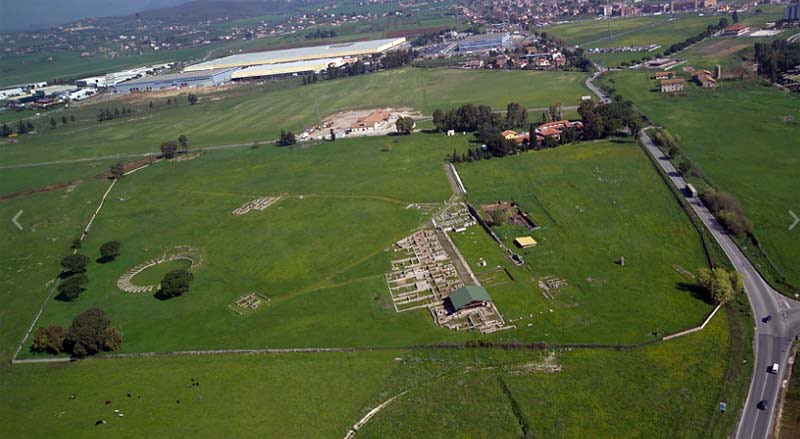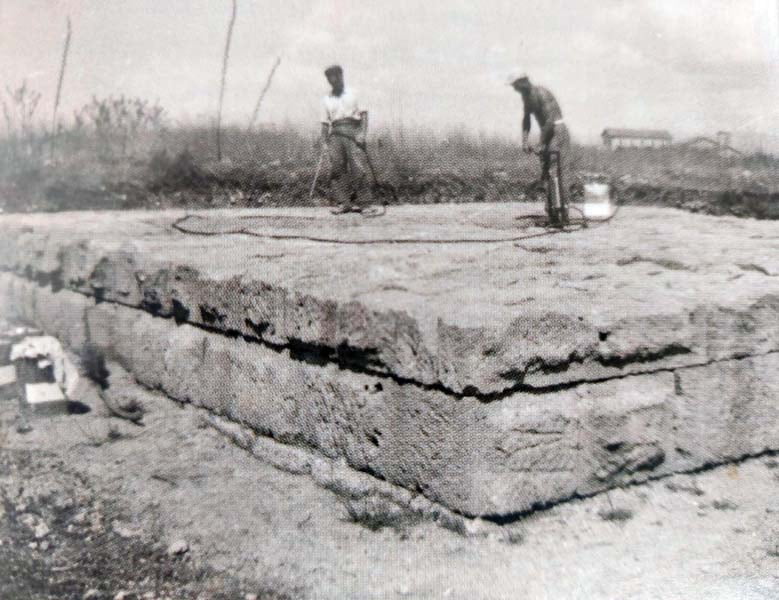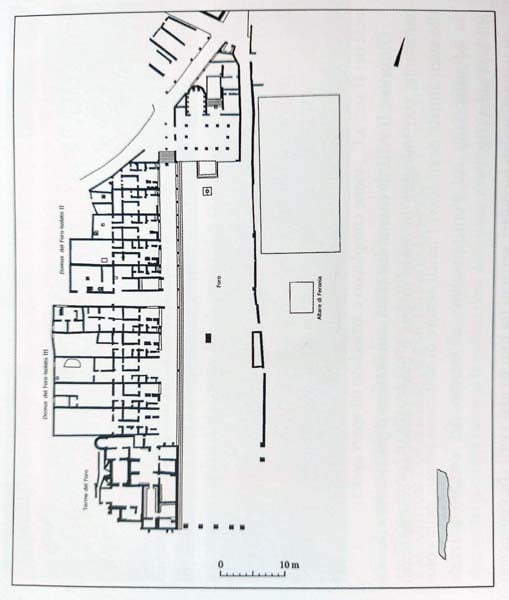Lucus Feroniae is the most important site among the many in which the cult of Feronia was practised, and has many characteristics of the cult of the goddess, such as the presence (in ancient times) of the sacred wood and that of the Tiber river, and having been meeting point between populations of different ethnic groups, being frequented by traders, artisans and farmers Falisci, Latins, Capenati, Etruscans and Sabines who converged there because festivals were organized in honor of Feronia.
It is extremely difficult to draw a picture of the consistency of the sanctuary during the archaic phase. The 2002-2004 excavations brought to light a considerable quantity of archaic materials of considerable value, which suggest that, as regards the early stages of life of the sanctuary, it most likely still lies below the currently visible levels (Benelli, 2016 ).
«The memory of the wood (lucus) sacred to the goddess Feronia, an important frontier sanctuary with a marked emporic connotation that the sources recall frequented since the Archaic age (XNUMXth century BC) and of the Roman colony that later took its name has been preserved thanks to the widespread citations of Greek and Latin authors and the numerous epigraphs that mention the colony» (Russo Tagliente, Ghini, Caretta, 2016).
However, ancient sources did not allow pinpointing the exact location of the site. This uncertainty lasted until the first half of the 900s; in fact, the excavations of the 50s brought to light the exact location of the sanctuary and the colony, which stood along the ancient via Campana, between the seventeenth and eighteenth kilometers of the current via Tiberina, on the Scorano estate of the princes Maximum.
In the two-year period 1958/59, next to an important series of statuary from the imperial age, there is the discovery of the large tufa altar of the temple of Feronia (fig.1).
Further excavations, in the following years, brought to light the remains of the votive deposit of the sanctuary of Feronia prior to the sack of Hannibal in 211 BC
Between 1970 and 1975, excavations in the area of the archaic sanctuary identified the portico of the temple and three small cult buildings from the imperial age. The living quarters found document the existence of a stable community that developed around the sanctuary before the foundation of the colony.
Further investigations have made it possible to acquire valuable information on the organization of the territory adjacent to the colony, the location of the necropolises and the port calls on the Tiber.
In the decade 2000/2010 the investigations focused on the main temple building of the sanctuary and allowed to know more widely the characteristics of the great temple of Feronia destroyed in the Sullan age (89/88 BC) (Russo Tagliente, Ghini, Caretta, 2016 ).
The visit of the area starts from Forum, with paving slabs still partially visible and with a portico on the long western side; in the wall on the eastern side, however, close to the ancient sacred area, a long tub attests to the presence of the aqueduct. On the northern side of the forum stands the altar of the civic cult of the goddess Feronia, the original of which is exhibited in the museum.
Adjacent to the altar is the basilica, with lateral ambulatories bordered by columns and support bases for honorary statues; behind this last building are a small temple with the remains of a round altar, and the Augusteum: an apsidal room richly decorated with marble and paved in opus sectile, inside which was placed a cycle of high-quality statuary dedicated to Augustus and members of his family, also exhibited in theantiquarium.
Alongside the Forum were the tabernae and spa so-called "of the Menander”, with mosaic floors with geometric motifs, a complex frequented until the early Middle Ages, as shown by an inscription. Continuing west you can visit a late-republican domus with floor mosaics from the imperial age and the small amphitheater built by a freedman in the Julio-Claudian age. Finally, to the north of the amphitheater, the thermal baths of via Capenate are visible. The center continued its life until the late imperial age. Between the end of the 2th and the beginning of the XNUMXth century AD the city now seems to have been abandoned and became a quarry for valuable materials. In the imperial age the cult of the Salus Frugifera, to which a temple was built inside the city, replaced the cult of Feronia, which was outside the city, beyond the enclosure, east of the Forum. A plan of the central area of Lucus Feroniae is shown in fig. XNUMX. For the aerial view of the site



Historical notes
The ancient center of Lucus Feroniae was located during the excavations conducted in the 50s by the Archaeological Superintendency for Southern Etruria.
CARD
LATEST PUBLISHED TEXTS
VISIT THE FACTSHEETS BY OBJECT

